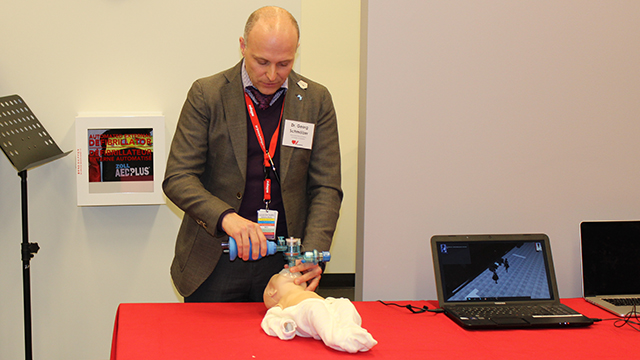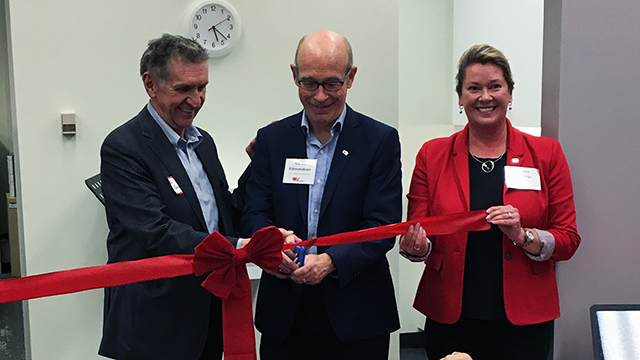
Georg Schmölzer at the grand opening of Heart and Stroke's new Edmonton office
The excitement among Heart and Stroke Foundation employees and volunteers was palpable at the grand opening of their new Edmonton administrative office and volunteer headquarters on Nov. 16. The bright, open space on Calgary Trail is the perfect place for the team to continue advancing the important work they do.
The Heart and Stroke Foundation's mission is to prevent disease, save lives and promote recovery. Their vision is a world where Canadians live healthy lives free of heart disease and stroke. They are committed to have the greatest tangible impact in improving the health of Canadian families every day.
As Donna Hastings, CEO of the Heart and Stroke Foundation for Alberta, Northwest Territories and Nunavut noted, that mission wouldn't be possible without the countless volunteers and donors that support the organization. "Those who give their time, talent and treasure to the Heart and Stroke Foundation are helping amazing research happen right here in Edmonton," said Hastings.
The grand opening featured a talk from one of the Heart and Stroke supported researchers doing life-saving work at the University of Alberta.
Georg Schmölzer, an associate professor and neonatologist at the Royal Alexandra Hospital's Neonatal Intensive Care Unit, shared insight into the work he's undertaking thanks to a Heart and Stroke Foundation Professorship.
Schmölzer focuses on how babies transition from the womb to the outside world when they're born. Four years ago he started investigating better ways to resuscitate babies moments after birth. Resuscitation is needed for about one in every 1,000 babies who are delivered at term, and more often at preterm. He received a Heart and Stroke Professorship to pioneera new resuscitation technique for newborn babies.
Schmölzer demonstrated the new technique, which involves a steady flow of oxygen and constant chest compressions, rather than the traditional three chest compressions followed by a rescue breath.
Thanks to the Heart and Stroke's support, Schmölzer's team is organizing a large-scale study called Surv1ve that compares the two techniques with sites across Canada, in Europe, South America, South Africa and possibly the United States and Australia.
Schmölzer also showed attendees another Heart and Stroke funded innovation to improve newborn resuscitation, this time in the form of a video game. The game his team developed, called Retain, trains people on neonatal resuscitation in an engaging and portable way. The game also allows people to keep their skills sharp, since recertification training for this important skill is only required every two years.

The Heart and Stroke Foundation, our partner in innovation
The Heart and Stroke Foundation funds over 850 researchers nationally. At the University of Alberta, the impacts of this funding are profound.
For Schmölzer, funding from Heart and Stroke helps keep his lab running. "With every dollar people donate to the Heart and Stroke Foundation, we get closer to finding cures or improving care for patients, in my case babies. So every dollar helps make babies better," he says.
It's not just babies that benefit from support from the foundation.
Researchers such asBarbara Ballermann and the eight other FoMD researchers who received Grants-in-Aid funding are tackling heart disease and stroke from all angles to find cures.
Kenneth Butcher a stroke researcher who has a Heart and Stroke Professorship is doing amazing work to improve outcomes for stroke patients.